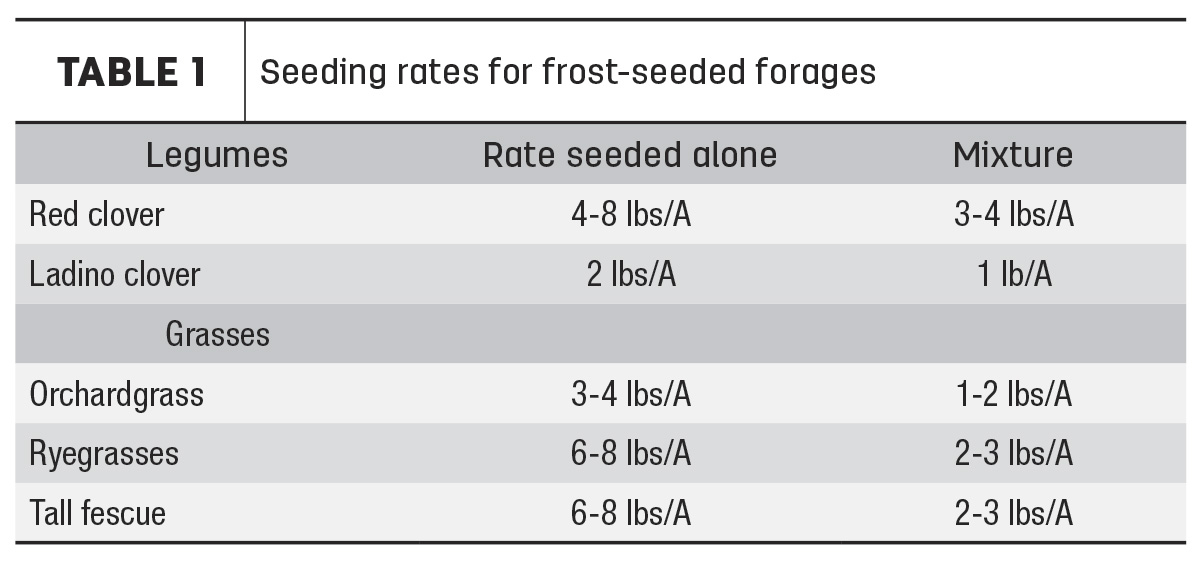When pasture and hay producers face high costs for equipment, diesel fuel and commercial fertilizer, frost seeding can be a lower-cost option to greatly improve the quality and productivity of pastures and one-more-year hayfields. After weed control and fertility management, frost seeding is the most beneficial management decision for improving pastures.
Both legumes and grasses can be successfully seeded in late winter with low labor and equipment requirements. Frost seeding is accomplished by broadcasting seed onto the soil surface without using herbicides, expensive equipment or tillage. Diesel fuel use can be reduced by using an all-terrain vehicle or four-wheeler rather than a higher horsepower tractor.
How then does frost seeding work? Alternate freezing and thawing temperatures are necessary for good seed incorporation, so timing of application is very important to the weather in your area. Feb. 15 is a good date to remember for frost seeding in northern and central Illinois. As we move into March, often temperatures are not cold enough to get good results. Fall and winter over-grazing of pastures to be frost seeded can help to reduce excess plant residue and provide more exposed (bare) soil.

Legumes add quality and volume to the pasture by providing nitrogen to the grasses that grow next to them. This will improve the crude protein and amount of forage available for grazing. Mixed stands containing 30% or more legumes do not need additional nitrogen application. Grasses can also be added to thicken up the stand and increase forage production. Species selection of grasses and legumes is also important to the success of frost seeding.
Smaller-seeded grass species work best for frost seeding. Orchardgrass, ryegrasses and tall fescues work well. Large fluffy seeds like smooth brome do not frost seed well. Legumes like red clover and ladino (white) clover are best for frost seeding. Alfalfa and birdsfoot trefoil are best drilled with good seed-soil contact.
Management is critical for the success of frost-seeded pastures. New seedlings need reduced competition from companion plants and weeds. Frost-seeded pastures need to be grazed on a timely basis during the spring and early summer to allow light penetration into the forage canopy. Legume plants are safe from trampling when they reach the three-leaf stage (trifoliate). Don’t apply nitrogen fertilizers to frost-seeded pastures since this may cause grasses to outcompete legumes and reduce the chances of successful establishment. Phosphorus, potassium fertility and proper pH are necessary for legume establishment.
Hay producers wanting one more year of production before renovation can also use frost seeding to thicken a stand. Legume stands can add red clover, a biennial or an annual clover like frosty berseem that has a cold tolerance for frost seeding. Berseem has a growth habit much like alfalfa and is very high quality. Berseem is also a non-bloating legume. Grasses can also be added to thicken a legume stand and reduce hay drying time. A higher seeding rate may be required for frost seeding than drilling, but savings come from reduced equipment, fuel and fertilizer use. Happy foraging!











